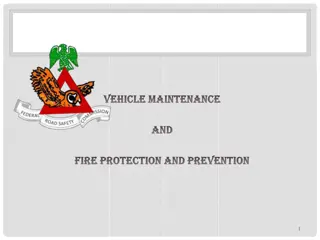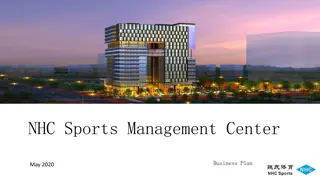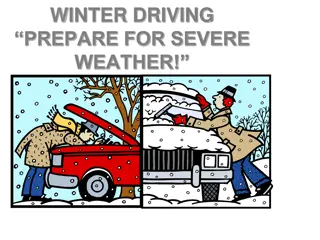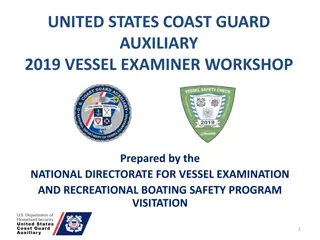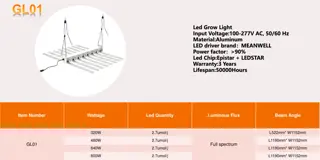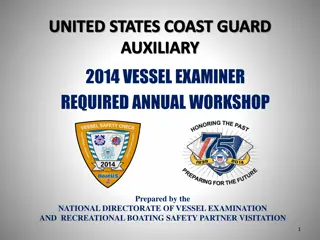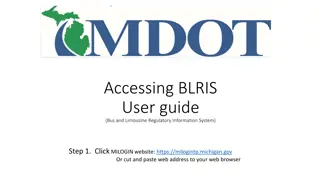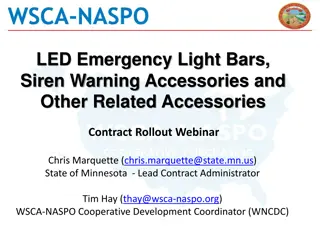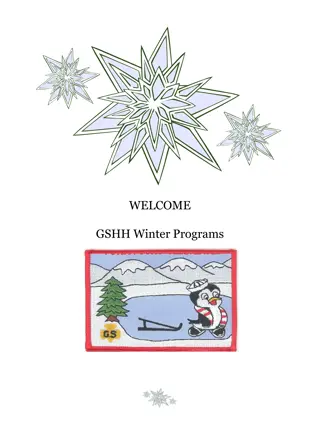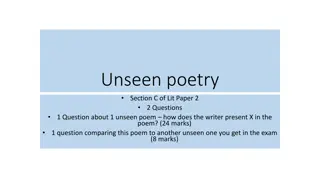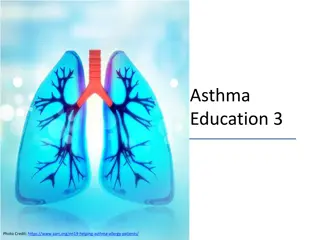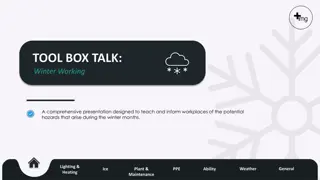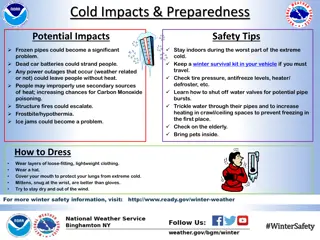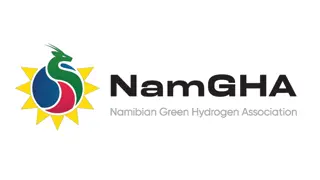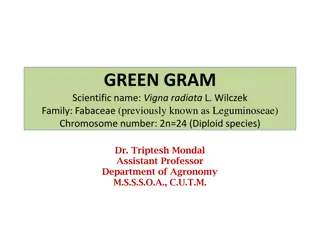Effectiveness of Green Auxiliary Warning Lights on Winter Maintenance Trucks - MDOT Research
Presentation by MDOT on the implementation and research findings of green auxiliary warning lights on winter maintenance trucks. The research project aimed to confirm the effectiveness of green lights, alone or in combination with amber, based on visibility and glare tests. Results indicated that green and amber lights together had the highest visibility and bearable glare discomfort, leading to improved safety for travelers.
Download Presentation

Please find below an Image/Link to download the presentation.
The content on the website is provided AS IS for your information and personal use only. It may not be sold, licensed, or shared on other websites without obtaining consent from the author. Download presentation by click this link. If you encounter any issues during the download, it is possible that the publisher has removed the file from their server.
E N D
Presentation Transcript
Green Auxiliary Warning Lights on Winter Maintenance Trucks Presentation to State Transportation Innovation Council By the Michigan Department of Transportation (MDOT) Nov. 19, 2021
Green Lights - Background At the 2013 North American Association of Transportation Safety and Health Officials (NAATSHO) Conference Ohio DOT announced use of green/amber/white on winter maintenance trucks (WMTs) MDOT ad hoc team piloted green and amber Local agencies/County Road Association of Michigan (CRA) got involved Michigan law changed in 2016 to allow the use of green MDOT implemented a phase-in of the use of green and amber on WMTs starting in 2017
Research Project - Effectiveness of Green Lights MDOT developed its implementation plan on the use of green lights based on various pieces of data and information. However: Existing research did not address green as one of the colors for WMTs Insufficient data to determine effectiveness Impact was subjective WMT driver feedback Motorist feedback What are the right flash patterns? Is green and amber together the best color combination, or is one or the other color alone better?
MDOT Research Project Confirm or refute the effectiveness of green auxiliary warning lights, with or without amber, on winter maintenance equipment, including review of flash patterns Michigan State University (MSU) was selected by the team based on their proposal Request to include recommendations for use beyond WMT Final report issued August 2020
Results Conspicuity Test (visibility) All amber had the lowest Amber and green had the highest Single-flash had the lowest Quad-flash had the highest Glare Test (discomfort) All amber had the lowest Amber and green had the highest Single-flash had the lowest Quad-flash had the highest
Interpretation of Results Correlation between conspicuity and glare Selecting the proper light configuration is a tradeoff between these two factors Amber single-flash was the lowest Amber quad-flash with green quad-flash had the highest Four patterns were found to offer improved visibility while resulting in a bearable glare discomfort to travelers All four had varying configurations of amber (quad) and green (single) The four patterns are: LC19, LC23a, LC27, and LC35
Final Recommendations Amber lights with single-flash pattern does not provide sufficient conspicuity Quad-flashing green is not recommended due to nighttime discomfort/glare Continued use of green is recommended Quad-flashing amber and single-flashing green was deemed the most effective. Trade-off between conspicuity and glare Minor impact on current use of green lights on MDOT s WMTs Slight improvement with synchronization Improved conspicuity should allow for use beyond WMTs
MDOT Research Spotlight Video https://www.youtube.com/watch?v=jke5bYpwPGo
MDOTs Implementation Plan Synchronize top/front lights on new WMT build-ups Continue investigation for options to synchronize all lights Expand use of green lights on other vehicles and equipment Risk-based approach First responder pickups first (aka: responders to highway incidents and closures). Attrition basis for all others as new vehicles and equipment are leased and/or purchased. Developing a configuration/pattern for each type of equipment for consistency in deployment throughout department, building on existing standards for placement. Share the information/research report with others Below is a link to the Research Spotlight. On the second page, right blue box, contains a link to download the final report. Green warning lights make winter maintenance trucks more visible (Michigan.gov)
Final thoughts The intent of adding green to WMTs was to improve the safety of the motoring public and the workers. MDOT made the best decision we could based on what we knew as to the proper configuration The MSU research provided excellent information to confirm that we made the right decisions. Improvements and expanded use of green lights on MDOT equipment will continue.
Thank you, Team! Co-project Manager: Melissa Longworth, Roadway Maintenance Engineer (now University Region Lansing Transportation Service Center Operations Engineer) MDOT Research Advisory Panel (RAP): Mark DeVries, Southwest Region Heavy Equipment Mechanic Supervisor Rick Tyrer, North Region Transportation Maintenance Superintendent Scott Ratterree, Fleet Administration and Operations Manager (now retired) MSU: Team led by Ali Zockaie MDOT Research Administration: Everyone!
Questions? Jim Gaus MDOT Occupational Safety Specialist MDOT Safety and Security Administration 517-719-4071 GausJ@Michigan.gov


